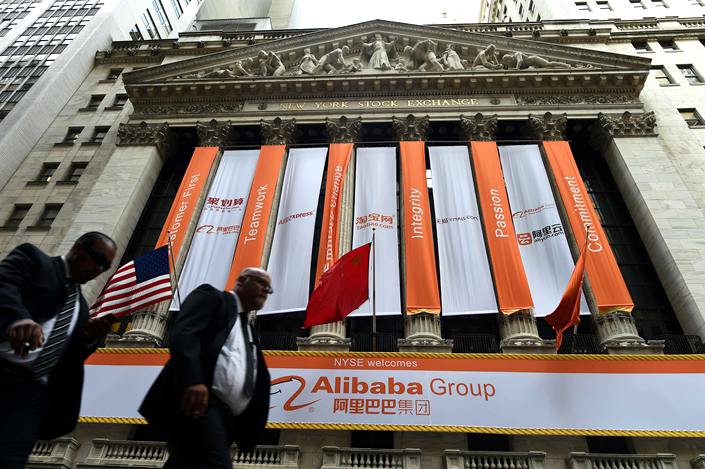
Last year’s wave of regulatory restrictions on private sector businesses in China has raised concerns about the future environment for corporate growth and the associated productivity gains, which echoes earlier worries about a “pivot to the state” that have appeared multiple times in the last 20 years. But is China’s private sector truly being crushed?
Our research recently published by the Peterson Institute for International Economics (PIIE) and Bruegel shows that the private sector has been expanding steadily over time and represents an increasingly significant share among China’s largest companies, whether measured by revenue or, for listed companies, by market capitalization.
Chinese official statistics do not provide an economy-wide, cross-sector breakdown that would give a clear sense of the respective shares of the state and private sectors in the economy. We therefore resorted to corporate-level data and analyzed two partly overlapping rankings of China’s largest companies. The first is a ranking by revenue, a proxy for a company’s activity, formed of the companies from the Chinese mainland in the yearly Fortune Global 500 ranking. The second ranking is limited to Chinese mainland companies whose shares are listed on a stock exchange, typically in Shanghai, Shenzhen, Hong Kong and/or New York, ranked by market capitalization at year-end.
Each company is categorized based on the level of state ownership at the group level. The private sector is defined as those companies, labeled “nonpublic enterprises,” in which Chinese state entities hold less than 10% of equity capital, which is a more restrictive definition than in control-based official statistics. Within the state sector, a distinction is drawn between, on the one hand, “mixed-ownership enterprises” in which the state holds only a minority position between 10% and 50%, and on the other hand state-owned enterprises (SOEs) in a strict sense, in which the state owns a majority stake.
Equity ownership structures matter. China’s private sector companies are focused on profit maximization and value creation in ways SOEs are not. Thus, ownership-based analysis that distinguishes the private sector from the state sector provides meaningful information about China’s economic outlook, even as the Communist Party attempts to develop its presence in the private sector through channels unrelated to state ownership.
Figures 1 and 2 illustrate the rise of the private sector among China’s largest companies, measured respectively by revenue (all companies) or market value (listed companies). As is clear in Figure 1, SOEs still dominate by revenue among the largest companies, much more so than in the Chinese economy as a whole. But the share of the private sector has been steadily rising, from zero in the mid-2000s to 19% of the total ($1.7 trillion out of $8.8 trillion) in Fortune’s 2021 ranking.

As for market value of the largest listed firms (Figure 2), the private sector represented merely 8% in 2010 but soared above the 50% threshold in 2020, and retreated only slightly in 2021, to 48%. Thus, the state crackdown in 2021 on certain private sector-dominated industries, such as internet platforms and after-school tutoring, has had observable impact but stopped well short of reversing the prior advance of the private sector using the market value indicator. In fact, it has not even offset half of the increase of the private sector’s share in 2020.

Figure 3 shows similar trends for other metrics, based on the same respective samples of companies.

Not privatization, but displacement of SOEs by better-performing private firms
The advance of the private sector among China’s largest companies does not appear to result from long-term planning or top-down decisions, but rather from bottom-up dynamics. Privatization has been virtually non-existent among China’s largest companies. Nor has the state gone out of its way to confer a comparative advantage to the private sector. What explains the observed trend, instead, appears to be that private sector companies have been more dynamic and profitable than SOEs — what PIIE scholar Nicholas R. Lardy describes as the “displacement of SOEs” by private sector companies, despite a policy environment that clearly does not favor them.
The emergence of private sector champions reflects the spectacular growth of internet content and e-commerce platforms, but also other areas where the private sector is strong, including manufacturing (e.g. electronics, electric cars, batteries, steel and chemicals), consumer products and services, pharmaceuticals, and life sciences. By contrast, financial services, telecoms, energy, and transportation remain dominated by SOEs, though the growth of large companies in those state-dominated industries has been slower, and some have even seen their market value decline in absolute terms over time.
The Chinese idiom “state advances, private sector retreats (国进民退),” which has been widely used to describe China’s economic trends, does not, therefore, represent the main picture of what has been going on in China’s business world so far, even in recent years.
Tianlei Huang is a research fellow at the Peterson Institute for International Economics (PIIE). Nicolas Véron is a senior fellow at the PIIE and at Bruegel.
Get our weekly free Must-Read newsletter.







